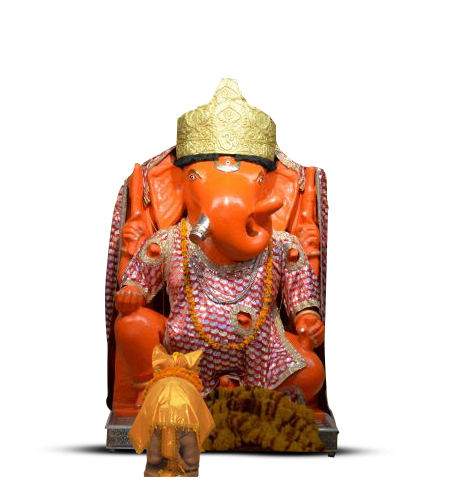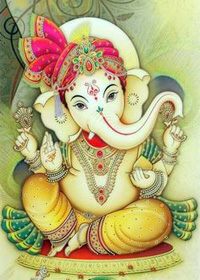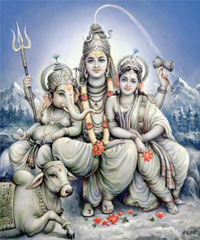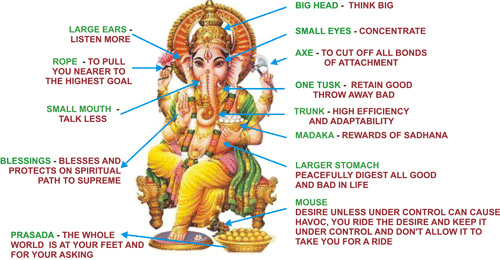



Lord Ganesha owns a supreme position amongst all Hindu Gods. Known as God of prosperity, wisdom, wealth, knowledge, Ganesha has a special place in the hearts of people of all religions. He is considered to be one of the friendliest Hindu Gods. His charming and cuddly image inspires his devotees to a great extent. He is regarded to be forgiving and adoring deity. This is why he is named as Ganpati i.e. Lord of people. Elephant being strongest, gentle and affectionate animal truly represents Ganesha qualities. A distinctive combination of his elephantine look and a tiny mouse symbolizes incredible acumen, strength, and presence of mind.
Appreciably, there are no defined standards of worshiping Ganesha. He can be revered in any form. He is referred in mantras and prayers by many different names such as Vinayak (God of Knowledge) or Vighneshwera (remover of obstacles). All Ganesha festivals are celebrated with equal zest and enthusiasm all across the country. India also homes number of famous Ganesha temples.

Ganesha is son of Shiva and Parvati and brother of Kartikeya (The God of War). Known as the lord of success, he owns an elephantine look. Curved trunk, gigantic ears and pot -bellied body of a human being make him to be the most popular gods of Hinduism. Ganesha is known to be one of the 5 primary Hindu divine beings named Brahma, Shiva, Vishnu and Durga. Ganesha is worshipped in Jainism and Buddhism too.
There are multiple stories that tell us different origins of Ganesha. As per the most popular story Goddess Parvati created an image of a boy to guard her house (mountain Kailash) while she bathed. As and when Lord Shiva came back home, the boy basis the instructions laid by Parvati did not allow him to enter his home. Lord Shiva on revealing his identity (as Parvati’s husband) was restricted to go inside. This made Shiva so annoyed that he had cut-off the boy’s head. Upon which Parvati got grief stricken that she wanted the boy back. Shiva seeing Parvati’s woe approached Lord Brahma. It is when he instructed to obtain the head of the first dead person that is facing north. Shiva’s troops found an elephant and therefore brought his head. This is how boy got an elephantine head and was named as Ganesha.
Ga means Knowledge
Na means Salvation
Pati means Lord
Ganesha tends to be widely worshipped and most popular deity among the masses. Riding a mouse, Ganesha denotes synchronization of small with the big. Being powerful in removing obstacles, almost all the ceremonies and occasions begin with an incantation to Lord Ganesha. As elephant is a symbol of loyalty, serenity and genuineness, Lord Ganesha is known to be deity of wealth and wisdom. The strong combination of mouse and elephant showcases the ability of Ganesha to tackle any size of unpredictable problems of all creatures. It has been asserted that all nature of worship is valueless if Lord Ganesha is not worshipped first. Ganesha is often observed along with Goddess Saraswati and Goddess Lakshmi which symbolizes that victory and beauty always comes with wisdom.

Iconography of the Lord is highly significant to value the worship of the deity. Being most eminent figure in Indian art, Ganesha is portrayed in different styles such as dancing, standing, sitting, etc. Head of an elephant, flappy ears, long trunk, giant belly, and four arms are some of the common illustration of Lord Ganesha. He often carries an axe, broken tusk, prayer beads, conch, a lotus, noose and a tray of sweets.
Four arms of Ganesha are true illustration of omnipresence and omnipotence. The objects carried by him in his right hand depict the motive needed to triumph over the sensation represented by objects held on the left side. The objects held in his upper hands such as axe and lotus showcase the importance of disuniting with the worldly addiction thereby conquering emotions. Noose helps to capture our fantasies. The goad or anushka held in Ganesha’s right hand helps him to remove obstacles and drive entire mankind to the righteous path.
The string of beads held in lower left hand of Ganesha denotes that flow of knowledge is incessant. The conch shell is blown before the start of auspicious occasions. It is a sign of good luck and wealth. His opened lower right hand in the Varada Mudra carries a gesture of granting blessing. Whereas his lower left hand in Abhaya Mudra is symbol of fortification, fearlessness and courage. The broken tusk illustrates the importance of sacrifice to get hold of wisdom. Tray of sweets containing Ganesha’s favourite Modak showcases the intensity of sweetness in creating self awareness.